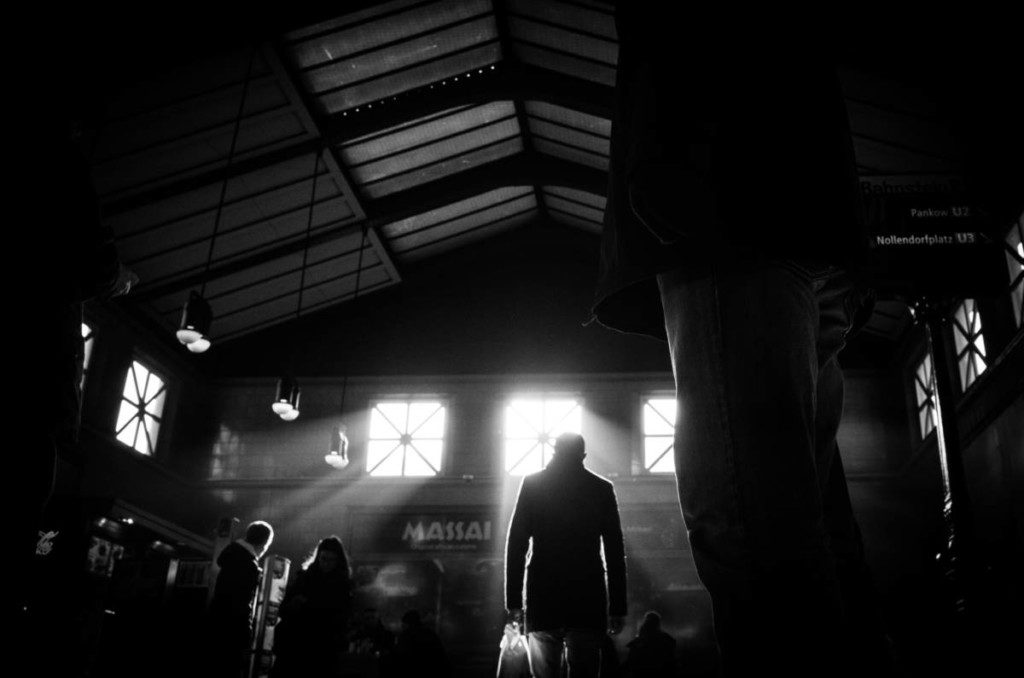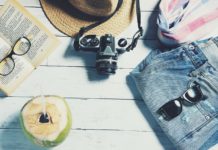Street Photography is one of the fastest genres in existence. Milliseconds decide whether we get the shot or miss it. We don’t have a second chance for a candid unique picture and have to get it right on the spot. From seeing a beautiful photo opportunity to capturing it there is only a very small time window left for the photographer in Street Photography. People could have moved away, the gesture is gone or we took too long fiddling with our camera that we got noticed and influenced the scene too heavily. Read more on how to quicken your reaction and getting the picture right the first time.
Getting familiar with your Camera
Controlling your camera should be a priority in Street Photography in general and not only to be quicker in taking pictures. Luckily most cameras today are very intuitive and even across brands there are certain standards that are very similar. The automatic modes that I use for example can be set either on my Canon, RicohGR or Fujifilm despite having different names. There are enough tutorials or easy to read guides out there that could help you to understand your camera better or finding the settings that are the most suitable for you. Invest that time to know your camera in and out at home and not when you are actually on the street. Nothing is more frustrating than having to fight with your gear while you are trying to capture beautiful moments. It kills your inspiration and you will lose your focus to concentrate 100% on the pictures.

Settings
While out on the Street I don’t want to think about my camera settings that much. Rather than adapting for every single picture individually I try to find a setup that fits my pictures the most, without huge adjustments. Therefore I can quickly snap away my pictures when I observe something of interest without worrying about the camera settings first.
Focus
I am very consistent in my style of pictures and therefore I can trust the pre-focussing technique very highly. Instead of measuring the distance for every new picture through the automatic focus I set my focus to a fixed distance. In my case this is somewhere between 1,5 and 2 meters, since my goal is to get very close to people.
Aperture
The aperture doesn’t only influence the amount of light that enters through the lens but also how narrow the depth of field is. Since I am pre-focussing my pictures I prefer to have a greater depth of field. Therefore I am mostly shooting between f/5,6 and f/11 with f/8 being my favorite choice. For my style of pictures this gives me just the right depth of field without forcing me to increase the ISO significantly.
If you prefer more narrow apertures like f/2 or the likes you either have to trust your automatic focus or live the fact that more pictures will be out of focus. Choosing such a low f-stop usually slows down the process of taking pictures on the street because you have to focus more carefully.
Shutter Speed
The shutter speeds also influences how fast you are able to react to scene in a way, that the faster the shutter speed is, the more movement the camera will compensate. For example at a shutter speed of 1/500s you will be able to walk at a slow pace and still take pictures that aren’t blurry, while at 1/100s you have to fully stop down completely and leave your camera steady while taking a picture. Therefore – the faster the shutter speed the more reluctant you can be with having steady hands and not moving your camera while taking a picture.
Read also my E-Book for tips on the right setup

Creating the Picture in your mind
Instead of relying on the viewfinder to decide for the final frame of the photo, you should be so familiar with your camera that you can frame it without the need to look through the viewfinder. Controlling your camera not only means to know the technical aspect, but also the field of vision intuitively. It is way faster to create an image in your head through your eyes, than through the viewfinder.
You have a greater overview over the scene allowing you to change your location, angle or perspective when you leave your camera down low and not blocking your vision. Once you have found a comfortable position you can fine tune the framing with the help of your viewfinder.
Try practicing to guess your camera’s field of vision for example on filling the frame with a shopping window. First guess the distance without the camera and then compare it with your actually frame of the viewfinder. If you only have to take a step or two back or forth you were already pretty close – good job.
Another advantage of walking mostly with the camera in your hand or on your neck strap is that you keep your profile as a Street Photographer low. You will be more noticeable when walking with the camera in front of your face, ready to shoot any second, influencing other people more heavily and distorting the reality around you.
Using a Prime Lens
Gear can have an impact on the speed to take pictures right away. Not in the aspect, that your gear has to be very expensive, but that for the purpose of Street Photography there is equipment available that is more suitable for this genre than others. Prime lenses are one of these aspects. They usually have a faster auto focus – if you rely on this focus mode – and they don’t lead you to the temptation to frame a picture through the zoom.
Like I mentioned in the section before, it is quicker and less conspicuous to frame a picture with your feet rather than with your camera. You have one thing less to worry about before taking a picture and can more easily adjust to the field of view of one focal length, instead of estimating the whole range of the zoom lens.

Practice regularly
The fact that our brain is a muscle that needs to be trained regularly is an often underestimated fact when doing Street Photography. Much like our “regular” muscles we need to take pictures on the regular or we will lose our ability to noticing scenes quickly and form them into images. Photography isn’t just a skill that you either have or don’t and once you reach a certain level you can leave it there. This ability deteriorates with every day we don’t take a picture. Personally, after not photographing for more than a week I need over an hour to get into the right “zone” on the street. Therefore I’d recommend you to take pictures as often as you can even if it is only for half an hour on a working day. The less breaks you take the sharper you mind will stay and react more quickly while you are on a photo tour.
Be mindful
After a day of taking pictures and walking for hours I feel exhausted. Street Photography can be a very demanding task, but for me it is not really the physical aspect, but more the mental effort that goes into this genre. Cities offer so much stimuli for our senses that we are easily overwhelmed by it. To not miss a crucial situation and absorb our environment we need to have a high capacity of concentration so we can sort out the disruptive background noise from the important signals that lead us to a good photo opportunity.
A good way to gain more speed and increase our capabilities to concentrate is meditation. I know that taking pictures brings a lot of people already in a state of special consciousness, but practicing meditation at home in a comfortable place can help to increase your speed of taking pictures on the street as well. You will reach your personal “Street Zen” status a lot faster and are able to observe your surrounding more carefully.
Stay Curious
Sebastian Jacobitz





















